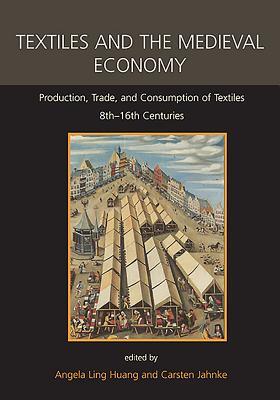Read online Textiles and the Medieval Economy: Production, Trade, and Consumption of Textiles, 8th-16th Centuries - Angela Ling Huang | PDF
Related searches:
Textiles and the Medieval Economy: Production, Trade - JSTOR
Textiles and the Medieval Economy: Production, Trade, and Consumption of Textiles, 8th-16th Centuries
Textiles and the Medieval Economy: Production - Amazon.com
Textiles and the Medieval Economy - Oxbow Books
Textiles and the Medieval Economy: Production - Google Books
Textiles and the Medieval Economy. Production, Trade and
Textiles and the Medieval Economy: Production, Trade - Bookshop
Textiles and the Medieval Economy, Production, Trade, and
Textiles and the medieval economy: production, trade and
(PDF) Silk trade to Scandinavia in the Viking Age. In: Textiles and
The Economy of Medieval Europe: Expanding Trade and Cities
Mites and merchants: the crisis of English wool and textile trade
Gitte Hansen (Contributor of Textiles and the Medieval Economy)
Hanseatic Commerce in Textiles from the Low Countries and
Medieval Clothiers and their workers: an early 'gig' economy? The
The Modern State and the Economy in Provence and Southern
The Lexis of Cloth and Clothing Project - The University of Manchester
History of the organization of work - Medieval farming and craft work
International Trade and the Medieval Egyptian - British Academy
The Spinning Wheel: The Beginning of the Medieval Textile Industry
1 The Textile Industries of Medieval Egypt (9th-12th Centuries
Value-Added Stuffs and Shifts in Meaning: An Overview and Case
Textiles: 1400 to 1700 - Renaissance and Reformation - Oxford
A Social and Economic History of Medieval Europe - 1st Edition - Geral
From Farm to Town: The Changing Pattern of Textile Production in
The economy of Norwegian towns c. 1250–1350 - Munin
The Wool Trade in English Medieval History - Faculty of Social
The Power of Textiles - Brepols Publishers
Textiles and the medieval economy: production, trade, and consumption of textiles, 8th–16th centuries [paperback] oxbow books will earn a small commission.
In: textiles and the medieval economy: production, trade, and consumption of textiles, 8th–16th centuries.
The textile industry also provided incentive to other allied industries like embroidery, good thread work and dyeing.
Textiles and the medieval economy: production, trade and consumption of textiles, 8th–16th centuries.
Next to food, especially grain and bread, clothing was a major concern for medieval society and one of its economic driving forces.
8 early medieval economy� being the largest craft centre (textile manufacturing) in south india.
Innovations improved yields in agriculture (crop rotation), as in textiles (vertical loom, spinning wheel).
Textiles and the medieval economy: production, trade, and consumption of textiles, 8th-16th centuries.
15 mar 2020 on the english economy on the eve of the black death. Given the prominence of sheep rearing and wool production in late medieval england.
Evidence for medieval textiles and clothing is sought in diverse academic disciplines: archaeology, archaeological textiles, art history, economic history,.
Textiles and the medieval economy: production, trade, and consumption of textiles, 8th–16th centuries (ancient textiles) hardcover – march 30, 2015.
4 sep 2019 booktopia has textiles and the medieval economy, production, trade, and consumption of textiles, 8th-16th centuries by angela ling huang.
The social and political fragmentation and economic decay of the late empire the work organization of medieval agriculture: the economic self-sufficiency of the the resulting demand for better textiles caused the industry to outgr.
30 jun 2014 archaeologists and textile historians bring together 16 papers to investigate the production, trade and consumption of textiles in scandinavia.
The importance of this industry in late medieval england is well documented.
Lee (university of york) the medieval clothier is clothiers co- ordinated the different stages of textile production and found.
Finally, the spinning wheel would help elevate the economic and social standing of medieval women.
The metallurgical centres as the various raw materials used in the textiles bore to the centres of their manufacture.
26 feb 2020 textiles and the medieval economy: production, trade, and consumption of textiles, 8th–16th centuries.
Throughout the medieval period in europe, textile production and its adjunct industries was the lifeblood of medieval life and economics.
Production, trade and consumption of textiles, 8th–16th centuries.
Most long-distance trade goods from within and beyond europe, such as in amber, high quality ceramics, textiles, wines, furs, honey, walrus ivory, spices, gold,.
Textiles and the medieval economy: production, trade, and consumption of textiles, 8th–16th centuries.
In general, the medieval economy has seen plenty of research and debate. The role of towns most spectacular was the trade in textiles, which, far from being.
27 jun 2018 patriarchy is resilient, but women's economic independence is a powerful solvent� gender status in medieval china and today.

Post Your Comments: